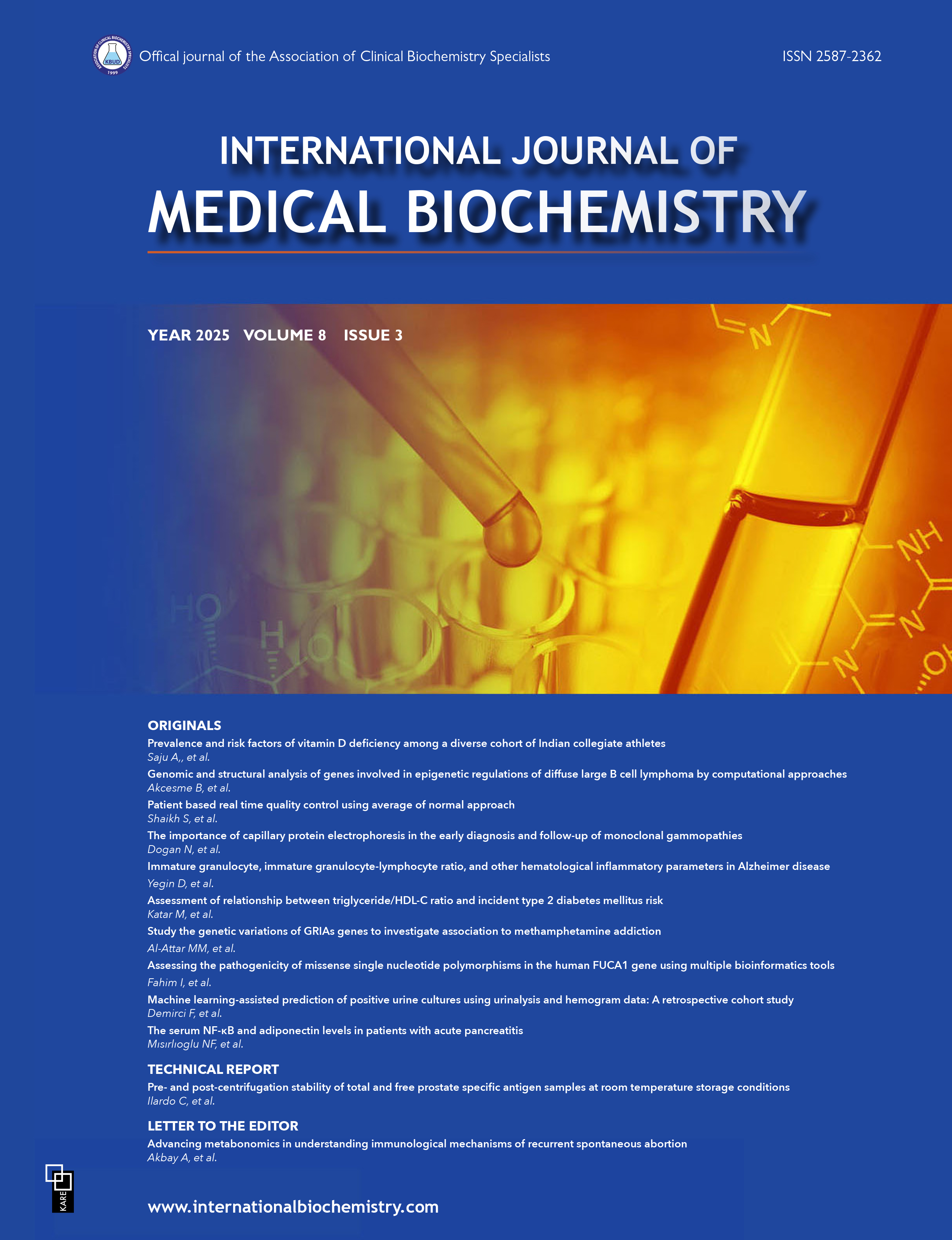Machine learning-assisted prediction of positive urine cultures using urinalysis and hemogram data: A retrospective cohort study
Ferhat Demirci1, Yusuf Arikan2, Ilkay Akbulut3, Deniz Ilhan Topcu41Department of Medical Biochemistry, University of Health Sciences, Tepecik Training and Research Hospital, Izmir, Türkiye2Department of Urology, University of Health Sciences, Tepecik Training and Research Hospital, Izmir, Türkiye
3Department of Infectious Diseases and Clinical Microbiology, University of Health Sciences, Tepecik Training and Research Hospital, Izmir, Türkiye
4Department of Medical Biochemistry, University of Health Sciences, Izmir City Hospital, Izmir, Türkiye
INTRODUCTION: Urinary tract infections (UTIs) are common and often lead to unnecessary urine culture testing, increasing costs and delaying treatment. This study aims to develop a machine learning (ML) model using urinalysis and hemogram data to predict urine culture positivity and reduce unnecessary testing.
METHODS: We retrospectively analyzed data from 12,433 patients who underwent urinalysis, urine culture, complete blood count, and CRP testing. After preprocessing and exclusion criteria, data were split into training, test, and validation sets. H2O AutoML was employed to develop and evaluate various ML algorithms.
RESULTS: The gradient boosting model demonstrated an AUC-ROC of 0.822 with high sensitivity (73.8%) and negative predictive value (90.4%), making it reliable in ruling out negative cases. Urinary leukocytes, nitrite, and bacterial count were identified as top predictors.
DISCUSSION AND CONCLUSION: ML-based models can improve diagnostic accuracy and reduce unnecessary urine cultures. These models have the potential to be integrated into clinical workflows to enhance cost-effectiveness and minimize empirical antibiotic use.
Manuscript Language: English






